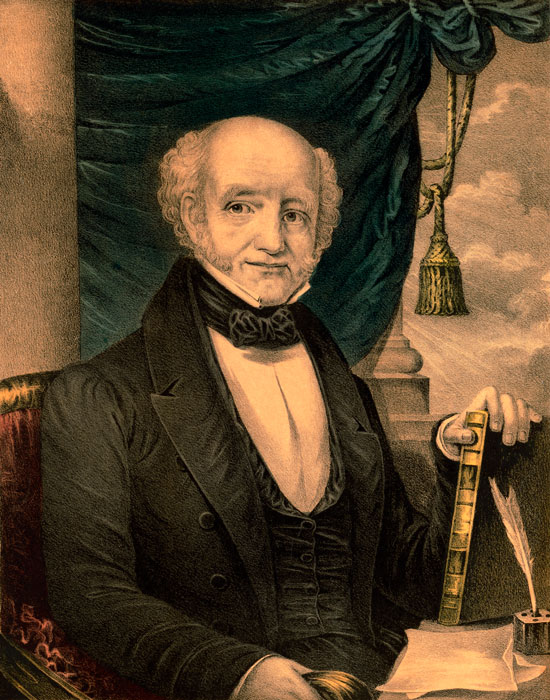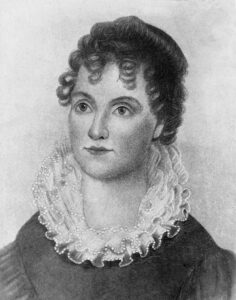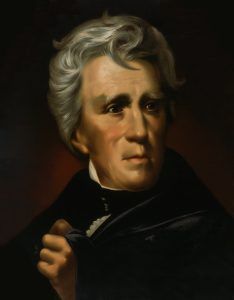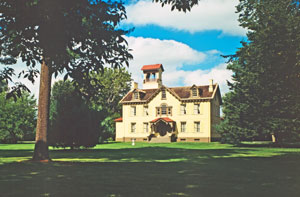Martin Van Buren was an attorney, statesman, and eighth President of the United States after serving as Andrew Jackson’s Secretary of State and Vice President. He was the first president born after the American Revolution and is the only president to have spoken English as a second language. Van Buren was the first U.S. president without any British ancestry.
Van Buren was born Maarten Van Buren on December 5, 1782, in Kinderhook, New York, to Abraham and Maria Hoes Van Buren, who were of Dutch descent. His father, Abraham Van Buren, was a patriot of the American Revolution, and he later joined the Democratic-Republican Party. He owned an inn and tavern in Kinderhook and served as Kinderhook’s town clerk for several years. In 1776, he married a widow, Maria Hoes Van Alen, who had three children. Her second marriage to Abraham produced five children, of which Martin was the third.
Van Buren was raised speaking primarily Dutch and learned English while attending school. He received a primary education at the village schoolhouse and briefly studied Latin at the Kinderhook Academy and Washington Seminary in Claverack. During childhood, he learned how to interact with people from varied ethnic, income, and societal groups at his father’s inn, which would later help him as a political organizer.
At 14, he began studying law at the office of Peter Silvester and his son Francis. When he began his legal studies, he wore rough, homespun clothing, causing the Silvesters to admonish him to pay greater attention to his clothing and appearance as an aspiring lawyer. He accepted their advice and emulated the Silvesters’ clothing, appearance, bearing, and conduct, and as a lawyer and politician, he was known for his amiability and meticulous appearance. Despite Kinderhook’s strong affiliation with the Federalist Party, of which the Silvesters were also strong supporters, Van Buren adopted his father’s Democratic-Republican leanings.
He spent a final year of apprenticeship in the New York City office of John Van Ness’s brother William P. Van Ness, a political lieutenant of Aaron Burr. Van Ness introduced Van Buren to the intricacies of New York state politics.
In 1803, he was admitted to the bar and returned to Kinderhook. At 5 feet 6 inches tall, Van Buren was small in stature and affectionately nicknamed “Little Van.” Van Buren formed a law partnership in his hometown with his half-brother, James Van Alen, and became financially secure enough to increase his focus on politics. On February 21, 1807, he married Hannah Hoes in Catskill, New York. She was his childhood sweetheart and the daughter of his maternal first cousin, Johannes Dircksen Hoes. Like Martin, her home life was primarily Dutch; she spoke Dutch as her first language and spoke English with a marked accent. The couple would eventually have six children, four of whom lived to adulthood.
Seeking a better base for his political and legal career, Van Buren and his family moved to the town of Hudson, the seat of Columbia County, in 1808. Van Buren’s legal practice continued flourishing, and he traveled all over the state to represent various clients. In 1808, Martin was appointed Surrogate of Columbia County, and in 1812, he was elected to a seat in the State Senate.
In 1815, he was appointed attorney-general of the State and moved from Hudson to the state capital of Albany, where he established a legal partnership with Benjamin Butler. In 1816, Van Buren won re-election to the state senate, and he would continue to simultaneously serve as both state senator and as the state’s attorney general.
On February 5, 1819, his wife Hannah died at age 35 after contracting tuberculosis. Martin Van Buren never remarried.
Van Buren emerged as the most influential politician from New York in the 1820s and established a political machine. With a few others, he formed a political organization known as the Albany Regency that controlled the politics of the State for 20 years.
Following the 1824 presidential election, Van Buren sought to re-establish a two-party system with partisan differences based on ideology rather than personalities or sectional differences. Van Buren continued to serve as a senator until 1827 when he resigned to fill the vacancy of New York governor caused by the death of Dewitt Clinton. While in that office, he proposed the Safety Fund banking system, which was set in motion.
By 1827, he had emerged as Andrew Jackson’s principal northern leader. He supported Andrew Jackson’s candidacy in the 1828 presidential election. In 1829, he was called into President Andrew Jackson’s cabinet as Secretary of State. He was a key Jackson advisor in the cabinet and built the organizational structure for the coalescing Democratic Party. Jackson referred to him as “a true man with no guile.”
He resigned from the office in April 1831, and in September of the following year, he arrived in England as American Minister at the British Court. Three months later, the Senate rejected his nomination, and he returned home.
In 1832, when Jackson ran for president again, Van Buren was on the ticket as the vice president candidate.
With Jackson’s strong support and the organizational strength of the Democratic Party, Van Buren successfully ran for president in the 1836 presidential election, defeating several Whig opponents. The eighth incumbent of that office, his popularity soon eroded because of his response to the Panic of 1837, which centered on his Independent Treasury system. He called an extraordinary session of Congress when the financial measure known as the Independent Treasury System was adopted on his earnest recommendation. His presidency was further marred by the costly Second Seminole War and his refusal to admit Texas to the Union as a slave state to avoid heightened sectional tensions. For several years, the Democratic party had mainly been in the majority. However, things changed when Van Buren, the Democratic nominee for President in 1840, was overwhelmingly defeated by General Henry Harrison, the nominee of the anti-Jacksonian Whig Party.
In 1844, he was a candidate for another nomination at Baltimore, Maryland, but the slave-holding interest rejected him, and James Polk was chosen in his stead.
Four years later, he was nominated for the presidency by the “Free-Soil Democracy,” or that portion of the party opposed to the extension of slavery. The Democratic party was divided on that issue, and General Zachary Taylor, the Whig candidate, was elected.
Van Buren returned to the Democratic Party after 1848 but grew increasingly opposed to slavery and became one of the party’s outspoken abolitionists. Though remaining in private life, he lived most of the time in Kinderhook, except when he visited Europe in 1853, 1854, and 1855. He supported the policies of President Abraham Lincoln, a Republican, during the Civil War, expressing himself decidedly in favor of maintaining the Union. He did not live to see the end of the conflict. He died of asthma at his mansion in Kinderhook, New York, on July 24, 1862, at 79.
In historical rankings, historians and political scientists often rank Van Buren as an average or below-average U.S. President due to his handling of the Panic of 1837.
©Kathy Alexander/Legends of America, updated March 2024.
Also See:
Presidents of the United States of America
Presidential Trivia, Fun Facts, and Firsts
Sources:
Lossing, Benson John; Eminent Americans, Volume II; American Publishers Corporation, New York, 1890.
National Park Service
Whitehouse.gov
Wikipedia




